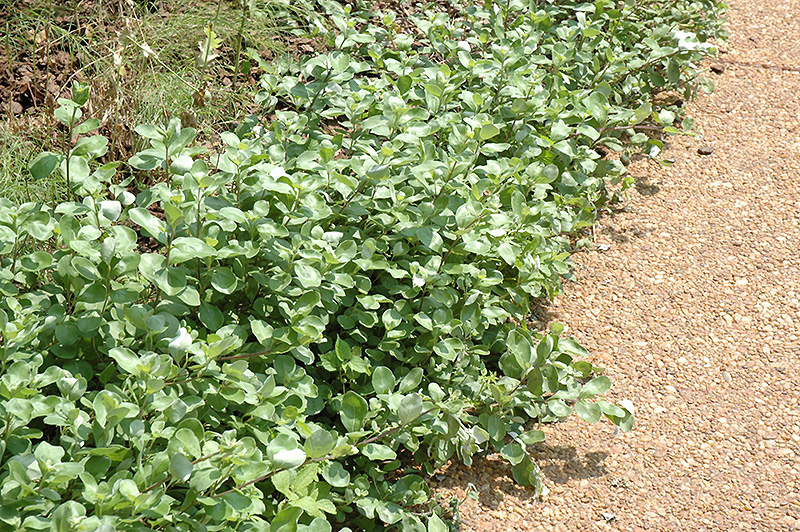>> Home
Height: 4 feet
Spread: 10 feet
Sunlight:
![]()
Hardiness Zone: 6
Other Names: Pohinahina
Description:
A seashore variety that is low growing with a sprawling habit, and is very fast growing and produces runners that root at nodes; pretty blue-purple flowers clusters in summer; can be cut back each spring, as it flowers on new wood and regrows vigorously
Ornamental Features
Beach Vitex has panicles of blue flowers with purple overtones rising above the foliage from mid to late summer. It has grayish green foliage with silver undersides. The palmate leaves do not develop any appreciable fall color.
Landscape Attributes
Beach Vitex is an open multi-stemmed deciduous shrub with a ground-hugging habit of growth. Its relatively fine texture sets it apart from other landscape plants with less refined foliage.
This is a high maintenance shrub that will require regular care and upkeep, and is best pruned in late winter once the threat of extreme cold has passed. Gardeners should be aware of the following characteristic(s) that may warrant special consideration;
- Spreading
- Suckering
- Invasive
Beach Vitex is recommended for the following landscape applications;
- General Garden Use
- Groundcover
Planting & Growing
Beach Vitex will grow to be about 4 feet tall at maturity, with a spread of 10 feet. It tends to be a little leggy, with a typical clearance of 2 feet from the ground. It grows at a fast rate, and under ideal conditions can be expected to live for 50 years or more.
This shrub should only be grown in full sunlight. It is very adaptable to both dry and moist locations, and should do just fine under average home landscape conditions. It may require supplemental watering during periods of drought or extended heat. It is not particular as to soil pH, but grows best in sandy soils, and is able to handle environmental salt. It is highly tolerant of urban pollution and will even thrive in inner city environments, and will benefit from being planted in a relatively sheltered location. This species is not originally from North America. It can be propagated by cuttings.

